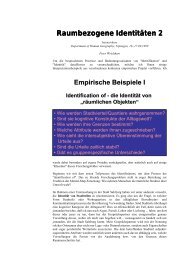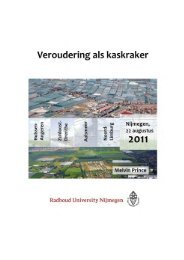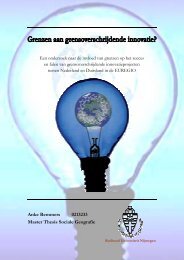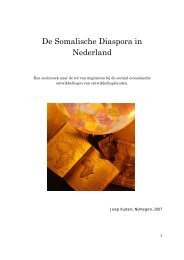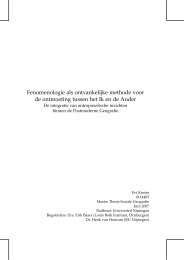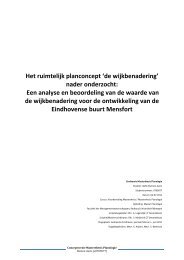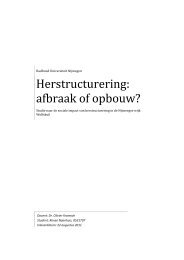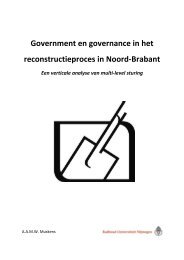Trading with the enemy in Mitrovica, Kosovo. - RUhosting
Trading with the enemy in Mitrovica, Kosovo. - RUhosting
Trading with the enemy in Mitrovica, Kosovo. - RUhosting
You also want an ePaper? Increase the reach of your titles
YUMPU automatically turns print PDFs into web optimized ePapers that Google loves.
For <strong>the</strong> largest part of <strong>the</strong> past 600 years <strong>Kosovo</strong> has been a part of <strong>the</strong> Ottoman Empire. Dur<strong>in</strong>g this time<br />
<strong>the</strong>re were no serious conflicts between Albanians and Serbs liv<strong>in</strong>g <strong>in</strong> <strong>Kosovo</strong> hav<strong>in</strong>g an ethnic character.<br />
They were poorly <strong>in</strong>tegrated, but <strong>the</strong>re was no ethnic conflict <strong>in</strong> <strong>the</strong>ir history toge<strong>the</strong>r until about a hundred<br />
years ago (Malcolm, 2002, xlv). As previously noted Albanians and Serbs fought toge<strong>the</strong>r at <strong>the</strong> Battle of<br />
<strong>Kosovo</strong> <strong>in</strong> 1389 aga<strong>in</strong>st <strong>the</strong> Ottomans and <strong>the</strong>re were also Albanians and Serbs fight<strong>in</strong>g on <strong>the</strong> side of <strong>the</strong><br />
Ottomans. In <strong>the</strong> 17 th century both Albanians and Serbs rose up toge<strong>the</strong>r to throw of Ottoman rule, and <strong>in</strong> <strong>the</strong><br />
18 th century Albanian and Serbian mounta<strong>in</strong> clans <strong>with</strong> a long history of <strong>in</strong>termarriage and cooperation<br />
jo<strong>in</strong>ed toge<strong>the</strong>r <strong>in</strong> support of an Austrian <strong>in</strong>vasion (Malcolm, 2002). These examples are to illustrate that<br />
<strong>Kosovo</strong>'s tensions and animosity between Albanians and Serbs is not a given, <strong>in</strong> fact <strong>the</strong>se tensions did not<br />
exist for <strong>the</strong> biggest part of <strong>the</strong>ir shared history and <strong>the</strong>refore may be even a less 'natural' state of relations<br />
between <strong>the</strong> two peoples than cooperation and peaceful coexistence. So, where did it go wrong?<br />
The first cracks <strong>in</strong> <strong>the</strong> relations between Albanians and Serbs <strong>in</strong> <strong>Kosovo</strong> started to grow over <strong>the</strong> past two<br />
centuries. There were various causes for this. Blame lies <strong>with</strong> <strong>the</strong> local Albanian lords of <strong>the</strong> 18 th and early<br />
19 th century who - although not ethnically motivated - repressed Christian Slavs for economic ga<strong>in</strong>. In <strong>the</strong><br />
19 th century <strong>the</strong> issue between Muslim Albanians and Orthodox Slavs first became politicised. It was <strong>in</strong> this<br />
century that a Serbian ideology created <strong>the</strong> idea of <strong>the</strong> battle of <strong>Kosovo</strong> as a def<strong>in</strong><strong>in</strong>g event for <strong>the</strong> Serbian<br />
nationality and <strong>with</strong> this followed <strong>the</strong> idea that <strong>Kosovo</strong> is a place for Serbs. L<strong>in</strong>ked to this were <strong>the</strong> mass<br />
expulsions of Albanians out of areas conquered by Serbia and Montenegro <strong>in</strong> 1877-8 that made Albanians<br />
see Serbs as a threat to <strong>the</strong>ir existence. The heaviest blow to <strong>in</strong>ter-ethnic relations was probably <strong>the</strong> Serbian<br />
and Montenegr<strong>in</strong> conquest of <strong>Kosovo</strong> <strong>in</strong> 1912 (Malcolm, 2002).<br />
“..above all, it was <strong>the</strong> policies imposed from above by <strong>the</strong> Serbian and Montenegr<strong>in</strong> governments from <strong>the</strong><br />
first moment of <strong>the</strong>ir conquest of <strong>Kosovo</strong> <strong>in</strong> 1912 that created systematic hostility and hatred on a scale that<br />
<strong>the</strong> region had never seen before.” -Malcolm, 2002, xlvi<br />
Albanians saw <strong>the</strong> imposition of rule by Serbia and Montenegro as a colonial power, and <strong>the</strong>mselves as a<br />
people conquered and colonised by a Christian power. Serbia's programme of mov<strong>in</strong>g Serbian 'colonists' to<br />
<strong>Kosovo</strong> matches this view. Serbs however view <strong>the</strong> conquest of 1912 as a liberation war where <strong>the</strong>ir captive<br />
population – <strong>the</strong> Serbs of <strong>Kosovo</strong> – were liberated from <strong>the</strong> Turkish imperial rule (Malcolm, 2002). Malcolm<br />
(2002) argues that both views are right, which makes <strong>the</strong> case especially difficult. Serbia had a long history<br />
<strong>in</strong> <strong>Kosovo</strong> and by this conquest requisitioned Serb-populated areas from <strong>the</strong> former Ottomans. Albanians,<br />
also hav<strong>in</strong>g a long history <strong>in</strong> <strong>Kosovo</strong> saw <strong>the</strong>ir rights be<strong>in</strong>g decreased. The Serbian policy became that<br />
Albanians were immigrants, a view that is to this day very popular among Serbs (field notes).<br />
3 http://www.balkan<strong>in</strong>sight.com/en/ma<strong>in</strong>/news/20703/<br />
26



